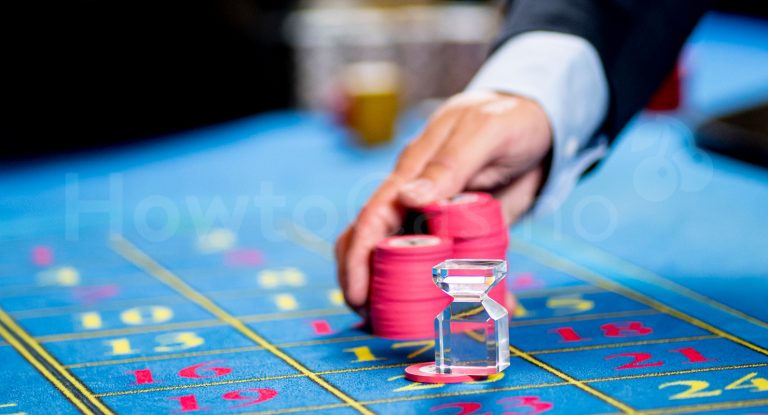The Martingale strategy in casinos has shaped the gambling landscape for over two centuries. The first mention of the system is associated with the French roulette halls of the 18th century, where players doubled their bets, aiming to cover losses and make a profit in a single successful round. Modern online platforms have transferred the mechanics to the digital environment, integrated RNG and limits, but have preserved the essence. This approach lures with the promise of simplicity and control over the bankroll, although it requires discipline and understanding of probability.
How to use the Martingale strategy in a casino
The Martingale system relies on doubling after a loss. The player places minimum bets, records the loss, then doubles it. Winning returns the amount of the investment and brings basic profit.
In online roulette or blackjack, the RNG determines the outcome, so the Martingale method does not alter the probability. For example, with a $10 bet, a series of five losses will require a sixth bet of $320, and the total expenditure will exceed $630. This calculation shows that table limits and bankroll size limit the possibilities.
Variations and adaptations: types of Martingale strategy
Gaming halls offer variations of the classic strategy. The “Anti-Martingale” system reverses the logic: the bet increases after a win and decreases after a loss. This approach reduces the risk of losing the bankroll in a long series of failures.
The fixed doubling step variant allows for flexible capital distribution without reaching extreme values.
In some casinos, craps or baccarat demonstrate more stable behavior with reasonable application of this method. In the casino, it remains popular precisely thanks to such modifications.
Practice: bets, limits, and probability of success
The probability of success in gambling always depends on the rules and RNG, not on doubling. In roulette with a single zero, the chance of winning is 48.6%. Even with skillful bet management, the probability of a long series of losses remains real. Bankroll limits protect the establishment from unlimited doubling.
For example, with a limit of $500, even a large bankroll does not guarantee compensation for losses. The strategy requires constant risk analysis: if the bankroll is $1,000, then doubling after five failures will already consume over 60% of the capital.
Application in different games: roulette, blackjack, baccarat, craps
In roulette, the Martingale strategy uses bets on even/odd or red/black. In blackjack, the rules allow for varying bet sizes, although cards and the probability of counting decks add a skill factor. Baccarat offers stable odds, making this method suitable for a calm pace of play. Craps, where the outcome is determined by rolling dice, also demonstrates interesting potential with careful choice of bets.
Examples show that doubling does not increase the mathematical expectation, but provides a tool to control the speed of losses.
Martingale strategy in a casino: practical application tips
The Martingale system requires precise calculations and strict adherence to discipline, otherwise any series of failures will quickly wipe out the capital. Clear recommendations help reduce risk and maintain control over the bankroll even in unpredictable outcomes.
A list of steps for effective use of the tactic:
- Determine the size of the bankroll considering table limits and the probability of a series of losses, for example, a minimum of tenfold reserve for comfortable play.
- Use the tactic only on bets with close to 50% chances to minimize variance.
- Set personal loss and win limits, stopping doubling when the limit is reached.
- Check withdrawal conditions: a casino with instant transactions to a phone or card increases convenience.
- Research the reputation of the online platform and the RNG before registering to avoid payout refusal.
- Choose the “Anti-Martingale” or combine types of Martingale tactics in high-risk situations.
- Analyze session statistics, record each bet and loss to adjust the approach.
- Test the system on demo modes or minimal amounts before investing significant funds.
Following these steps strengthens financial discipline and reduces the likelihood of critical losses. This approach turns this tactic into a risk management training tool, rather than a means of guaranteed earnings.
Withdrawal to a phone: features and reasons for refusal
Online casinos use various withdrawal methods. Quick money withdrawal to a phone is possible with the support of mobile payment systems and a verified account. The average transfer speed ranges from a few minutes to a couple of hours when using instant services. When using bank cards for transfers, the process may take 24-48 hours due to internal checks. Refusal can occur due to violation of limits, non-compliance with bonus conditions, or suspicion of money laundering.
The Martingale strategy in a casino does not affect transaction speed, but disciplined bet management reduces the risk of fund blocking. For example, large winnings after a long series of doubling may trigger additional verification if the account is not verified.
Martingale strategy in a casino: conclusions
The Martingale strategy in a casino remains a vivid tool that combines simplicity with the illusion of control. Doubling ensures a quick return of losses, but the probability of a long series of failures and table limits dictate caution. Rational bankroll management, analysis of the RNG, and choosing the right game turn the tactic into an educational tool rather than a profit guarantee. This approach fosters a mature attitude towards gambling, where winning and losing depend on calculation and discipline, not on blind faith in a flawless tactic.


